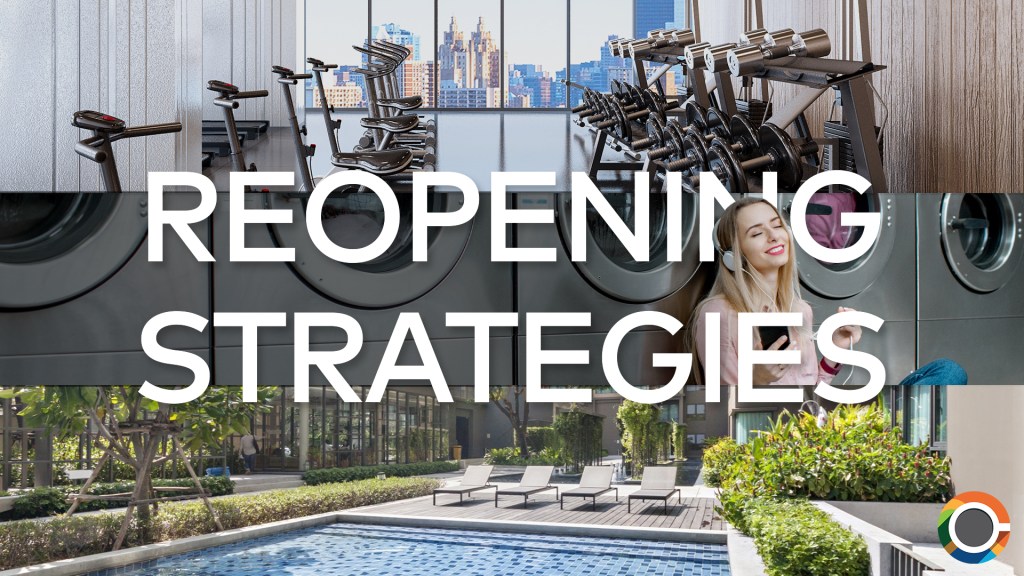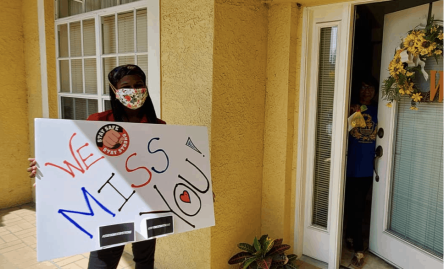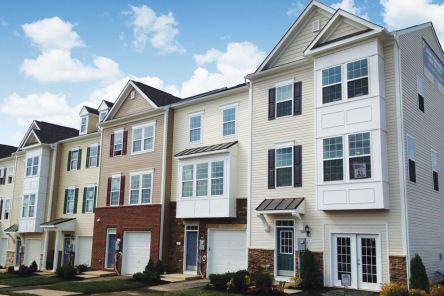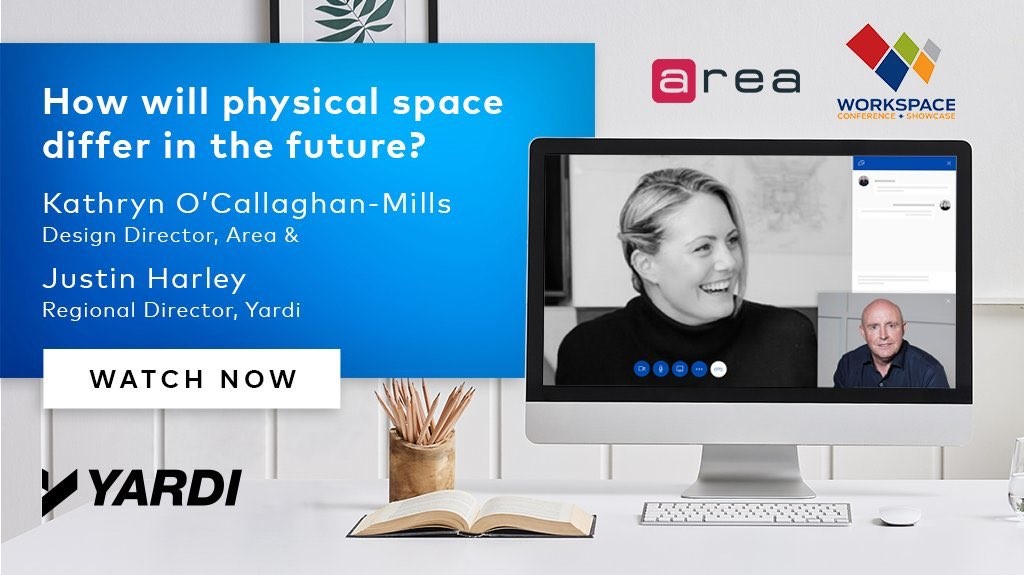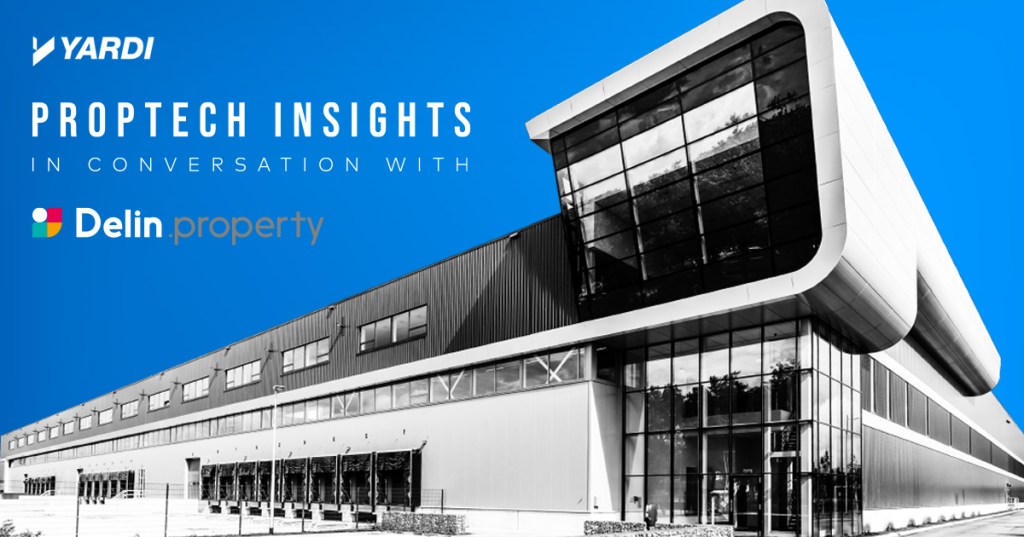When you invest in your energy strategy, the rewards are proportionate. Simply put, the upgrades can pay for themselves. You just have to get the ball rolling first. That was just one of the key takeaways from our recent webinar on energy efficiency with McKnight’s Senior Living. Randy Moss of Yardi led the discussion on ENERGY STAR benchmarking and best practices for providers, and he was joined by Christopher Wright from Merrill Gardens, who shared his company’s own experience with tracking energy usage and reducing spend. Merrill Gardens’ road to energy success Starting in 2016, Merrill Gardens was required to record and report their energy usage by the city of Seattle. And at first, everything was done manually. Staff were pulling data from paper bills and accounting systems to upload into ENERGY STAR for benchmarking. Eventually, the city’s utility provider enabled automated data sharing, which simplified the entire process. The state of California soon followed with regulatory requirements, and seeing the writing on the wall, Merrill Gardens began rolling out benchmarking at all of their communities nationwide. Like in Seattle, many utilities needed manual data entry at first, but nowadays, the majority allow automated data transfer. By late 2019, Merrill Gardens had a year’s worth of data, which gave them great visibility into their buildings’ usage compared to one another. “Based on those sorts of trends, we already had the ability to identify buildings to focus special attention on for CapEx and operation improvements,” said Wright. Unfortunately, the pandemic brought new hurdles, but that only sharpened their focus. “In early 2020, like everyone else, we discovered our resources were suddenly and unexpectedly limited, while at the same time, savings and operational efficiencies were even more important,” said Wright. “Partnering with Yardi over the last...
Building Economic Resilience...
The Value of Diverse Housing
Is it possible to shorten the fallout of an economic crisis? Researchers at the University of Maryland believe it’s possible. Preventative measures can mitigate the impact of economic downturns by creating neighborhoods that are naturally resilient to variances in economic performance. Diverse neighborhoods, researchers propose, can decrease the rate of foreclosures and sales before and after economic crises strike. What puts homogeneous neighborhoods at risk? After World War II, planners developed neighborhoods with a single income bracket in mind. Like their urban counterparts, these planned communities segregated individuals and families based on their earning power and, occasionally, place of employment. During difficult economic times, neighborhoods that lack diversity are prone to clusters of foreclosures and sales before and after the peak of the recessionary activity. Neighborhoods that relied heavily on one employer also suffered severe spikes in financial difficulties. The homogeneous nature of these neighborhoods left them vulnerable. If one company or industry suffered, the entire neighborhood suffered as well. Neighborhoods with high concentrations of bank-owned and for-sale homes take longer to recover from economic downturns. Residents that struggled with mortgages may have postponed home maintenance in an effort to conserve resources for mortgage payments. As a result, many foreclosed homes show signs of physical deterioration. Additional damages may occur during the eviction process. Neighborhoods with high concentrations of foreclosures and sales experience the devaluation of nearby homes. Additionally, as lender confidence decreases, so will investment in the area. To create neighborhoods that are more resilient in the face of economic trouble, University of Maryland researchers suggest that developers shift to mixed-income housing models. Uncovering the economic disadvantages of homogeneous neighborhoods The study began by creating a data set that logged zoning and foreclosures across 14 metropolitan statistical areas (MSA). Researchers selected MSAs from throughout the...
Warm Social Distance
Today’s Welcome Packages
Virtual and self-guided tours have helped numerous property managers fill a lease up during social distancing. When it comes to welcoming new residents, though, creativity and agile software make it possible to maintain space without seeming distant. Personalization is essential Personalization is a key element in helping new residents feel welcomed. These days, many of the best practices for personalizing welcome packages still apply. They simply require a bit of creativity to implement while keeping space, health, and customer satisfaction at the forefront of welcoming efforts. Leasing agents can assist welcoming committee members with helpful tips about the new residents. When your marketing and leasing platform integrates with your property management software, the notes that you put in prospects’ files easily transfer to resident files! Note pet ownership and areas of interest such as container gardening and DIY crafts. Your notes can inform the types of gifts included in each new resident’s welcome package. Remember: thoughtfulness makes a greater impression than price! Even when you can’t greet new residents face-to-face, the thoughtfulness and personalization of your welcome package can speak for you. Local treats delivered Since COVID-19 precautions required businesses to limit on-premises operations, delivery features have become a necessity. Many locally-owned small businesses that did not invest in delivery services have implemented them in recent months. The shift to delivery works in your favor. Include gift cards and discount vouchers in your welcome basket. Gifts from locally-owned shops and restaurants have an even stronger appeal. Every transaction is vital to small businesses. Your patronage demonstrates your efforts to support entrepreneurs in the community while giving residents a preview of the hyper-local treasures in the neighborhood. Use your online concierge platform as a delivery system for your welcome packages. Notify residents when the package...
New IPO Standards
Goldman Sachs’ Diversity Pledge
The first day of the Goldman Sachs diversity pledge has arrived. The investment bank announced that as of July 1, 2020, it will require diversity amongst the board members of new applicants in the United States and Europe. When announced in January, the investment bank could not have foreseen how poignant the pledge would become. All eyes on diversity Late spring and summer brought an onslaught of social issues to the forefront of American culture. As the nation attempted to establish a new normal amidst COVID-19 precautions, essential workers kept the economy and healthcare systems afloat. During these times, 1 in 3 women were considered essential workers. Also during this time, researchers revealed that the pandemic brought worsening economic and social inequalities for women. The necessary role of women in the workforce juxtaposed the inadequate measures to help them balance the demands of work and home. To add to the complexity, March marked the beginning of social unrest. A series of police-involved shootings sparked the first wave of protests highlighting discrimination against minorities within the justice system. The protests continued into June, joined by Pride Month events that highlight the struggles of the LGTBQ community in the workplace and healthcare system. Consumers and employees across the U.S. forced businesses and institutions to examine their inclusion practices or lack thereof. Goldman Sachs CEO David Solomon could not have foreseen any of this back in January. He could not have known that pandemic fallout and social justice demonstrations would place the bank at the forefront of the social equity revolution on Wall Street–but timing is everything, even when it’s unplanned. Bye bye “bro boards” Goldman Sachs now requires all American and European IPOs to have at least one “diverse” board member. Solomon emphasized that women are...
Reopening Multifamily Amenities
Tools and Tips for Property Managers
It has been about four months since U.S. multifamily communities restricted access to amenities like gyms and swimming pools. You’re likely eager to resume offering the stellar features that helped build your community brand. (Your residents are probably antsy, too!) As shelter-in-place restrictions lift, you may be unsure how to reopen those amenities with ongoing social distancing. It’s a valid concern, but we’re here to help. In this post, we’ll explore tips and tools for reopening your community amenities and public spaces. Before reopening your amenities Start by creating a reopening plan. The National Apartment Association (NAA) released recommended best practices for reopening amenities at multifamily properties. Along with those best practices, consider that a single reopening plan may not work for all properties, even those within a portfolio. It is important to customize a plan for each property so that directives align with the relevant guidelines issued by national and local health officials. You will also want to review your liability insurance policy and update it with pandemic provisions. Many insurance providers and legal institutions offer helpful customizable templates. Communicate these updates and obtain compliance signatures from property managers, vendors, staff and residents. Watch this webinar to learn how LumaCorp and Gables Residential navigated the reopening process. Preparing maintenance staff and vendors for reopening Your maintenance staff will be working double duty. You may even need to expand your maintenance team. Keep all team members on the same page with the latest cleaning schedules and updates using a mobile maintenance app. Yardi Advanced Maintenance provides the tools that you need to assign tasks, track and supervise your site’s schedule. Manage all preventive, routine and emergency maintenance within a single app. This tool will allow staff members to access revised cleaning schedules on the go and signoff on completed tasks without revisiting the office. Outside vendors will also need additional resources to stay up to date on revised supply and service schedules. Use a mobile vendor management system like VendorCafe to issue updates to existing vendors and onboard new vendors. You can also use the software to pay vendors, which will reduce traffic in the leasing office as well as lower printing, mailing and storage costs. Watch this video to learn how VendorCafe streamlines vendor communication and payments. Restoring full functionality to the leasing office If the community is like a body, then the leasing office is its brain. It’s the epicenter of services and sales that helps the community function. Due to its necessary function, the leasing office probably never completely closed, and that’s okay. The key now is to resume as much functionality as possible with fewer nonessential interactions. Use online payments and online maintenance requests to limit foot traffic in the leasing office. The RentCafe Resident app empowers residents to do both with a single login. The app has experienced 89% year-over-year adoption growth due to its simple user interface. You can also offer services to prospects while practicing social distancing at the leasing office. A survey of 3,000 apartment shoppers reveals that 83% of respondents would take a self-guided tour if available. Their reasons vary: nearly 60% of respondents wanted to observe social distancing. About 63% of renters want to tour model units at their own pace and 43% appreciate more flexible scheduling. Prospects can easily schedule self-guided tours online through your RentCafe marketing website. The app will automatically create a guest card and convenient customizable follow-ups. Join a webinar to learn more about the versatility and flexibility of RentCafe. You’ve got mail … and lots of packages Mailrooms have remained open at all properties, yet revisiting mailroom protocols can improve safety for occupants. Mailrooms are rarely spacious, which makes social distancing difficult for residents and mail personnel. Consider limiting the number of people who can enter the space at any given time. It may also be beneficial to close the mailroom for disinfecting after...
SRI Keeps Spirits High...
Heroes Work Here
It’s been months since the coronavirus arrived and upended normal as we knew it. But slowly and surely, things are stabilizing, business are reopening and people are going back to their routines. In senior living, however, safety measures remain for the protection of residents and staff. It may be many more months until anything resembling “normal” returns for older adults in communities. But that doesn’t mean they can’t have fun and live their lives in the meantime! For the previous two posts on positive senior living news, I covered different Yardi clients across the country. This time, we’re focusing on one in particular: SRI Management. They recently highlighted creative activities at their communities in their own blog post and invited us to share them with you. Here are a few stories from their residents and staff. Enjoy! Music video goes viral With ample social distancing, handmade signs and a great sense of humor, residents from the Cove at Marsh Landing showed how much they’ve already overcome throughout their lives, affirming their strength and resolve to beat this pandemic too. All to the tune of Stayin’ Alive by the Bee Gees. Check out the news article for the video. Delivering care outside the community With visitor restrictions still in place, spouses of residents haven’t been able to see their loved ones as much as they’d like, and many are battling loneliness without the support of an engaged community. So the workers at the Superior Residences at Brandon came up with the idea to go visit the residents’ spouses themselves and give out gift bags. They called it “Operation Spread the Love.” Mother’s Day drive-through parade For Mother’s Day, residents at The Arbors of Gulf Breeze were treated to a parade on wheels, courtesy of family...
Getting the Job Done
Hagerstown Thrives While Distant
Public housing agencies across the country are open for business, even when their physical offices are closed. Their services and resources are literally vital to the health, safety and welfare of millions of Americans. How do they make it work? Hagerstown Housing Authority (HHA), which serves the city of Hagerstown in Maryland, uses specialized software solutions from Yardi that connect their staff to critical workflows that serve waitlisted households, applicants, participants and residents, and landlords. “The coronavirus is an awful situation, of course, but it has given us an opportunity to help our staff realize the benefits of cloud-based software, as well as online solutions for our applicants and residents,” says Sean Griffith, executive director for HHA. HHA has been serving its residents for more than 65 years. As a high-performing housing authority, as distinguished by the U.S. Department of Housing and Urban Development, HHA owns and/or oversees 1,320 dwelling units in 11 communities and more than 900 Housing Choice Vouchers for use by residents who do not dwell in HHA-owned properties. Approximately 12% of the city’s residents are assisted by HHA housing resources. The waiting list for housing assistance from HHA grows daily as economic variables affect local residents. “There has been a definite uptick in need for housing assistance. Our properties are in demand, and the waiting list for Housing Choice Vouchers is growing,” says Griffith. Using RentCafe PHA, HHA makes it possible for interested households to place themselves on its waiting list. The process is handled completely online without the need for an office visit. That feature is particularly timely for HHA given the circumstances created by the COVID-19 pandemic. The agency went live with the Yardi PHA suite in the spring of 2019 and considers cloud functionality one of the...
Virtual GWA 2020
Future of Coworking
The 2020 GWA Conference, like many events nationally this year, was forced to pivot to a virtual setting. Despite the quick timeline to put the online event together, GWA was able to gather a fantastic group of presenters and over 1500 attendees took part in the 24-hour production. The prevailing themes were health and safety for both members and staff, as well as the changes the coworking industry can expect to come out of this crisis stronger and smarter. Here is a look at some of the takeaways from the global event. The office is not dead One of the interesting nuances from the pandemic has been how productive employees have been while working from home. Employers have generally been pleased with the productivity of a completely remote workforce. It is potentially a defining moment for coworking spaces, which could reap the benefits of companies who realize they don’t need to house everyone in one centralized location, and many positions could become fully remote. Previously remote workers, on the other hand, may just feel some satisfaction at what they’ve known all along. However, bandwidth limitations, distractions or lack of comfort could pose some challenges while working at home. Joe Brady, CEO Americas of The Instant Group, explained that while work from home policies have had success, coworking solves for the issues that WFH presents. Brady’s stated the 3 C’s for where people choose to work are concentration, community and collaboration. While one may achieve some aspects of that from home or with the emergence of video conferencing, the coworking industry is a hub for all three simultaneously. “The idea of innovation could be dying if everyone is permanently working from home,” he said. “The threads of culture strengthen when people come together.” Ensuring health...
Avenue5 Moves Ahead
With Online Services
With the outbreak of COVID-19, the new normal of social distancing has created a big challenge for many businesses — and real estate firms are no exception. Fortunately for many multifamily operators, opportunities to streamline common business processes using online software solutions are helping to surmount challenges, while delivering unexpected benefits. That’s what Avenue5 Residential has discovered. The Seattle-based firm, which focuses on third-party multifamily property management, oversees more than 375 properties and 70,000 units in 13 states, with offices in Denver, Orange County, Phoenix, Portland, Salt Lake City, San Diego, Spokane and greater Washington, D.C. Recognized as one of NMHC’s Top 50 Managers, Avenue5 is employing digital solutions from Yardi to protect their associates and customers during the COVID-19 pandemic, all without sacrificing service or missing revenue opportunities. In order to continue serving clients and residents, collecting rents, completing work orders and maintaining site operations while following CDC and regional health recommendations, Avenue5 relies on the Yardi Voyager and RentCafe online platforms. With COVID-19 concerns requiring the company to close its property leasing offices to foot traffic, Avenue5 further deepened their focus on promoting online options to residents at the onset of the outbreak; it subsequently saw a jump in resident online payment adoption from 50% to 70% as a result. April and May rent collections were strong, and executives are optimistic about collections in the months to come. “We expect to see a long-term benefit as customers acclimate to the ease of paying online, and as our associates reduce the amount of time spent on manual processes,” said Pål Ottesen, chief financial officer at Avenue5. Ottesen also noted that moving rent payments online had reduced numerous risks associated with accepting paper checks. In order to support residents directly impacted by COVID-19, and...
Rents Drop, Prompting Concern
Industry insight from Yardi Matrix
When you think about a 0.3 percent drop in anything it hardly seems like a big deal. It’s just 3 pennies on every 10 dollars. If you are an apartment operator and that reflects the national average on rents for May compared to April, some would figure it’s something not too difficult to make up. But what if it isn’t? The three-tenths of a percent is the drop for one month, and 12x that comes to 3.6 percent annually. Quickly, that could become serious. During what would typically be the middle of prime leasing season, rents declined nationally by 0.3% on a month-over-month basis, reports Jeff Adler, vice president of Yardi Matrix. He describes that drop in rents as startling. “Is it a harbinger of things to come? A warning sign?” Adler says. “When rents being offered to new residents drop like that month-over-month, year-over-year you have to ask yourself.” Adler says current national multifamily occupancy rates are mostly steady (a good thing). And there’s no deterioration in demand as measured by apartment search activity, which is also positive. “But this is peak leasing season,” he adds. “Falling like this would be at a rather significant clip. If we see it again next month, then demand will not have stabilized. And data show this is happening to high-end apartment communities.” The steepest declines in rents on a MoM basis were seen in major gateway markets that were among the first to impose strict lockdowns. Smaller markets are not immune and have seen substantial MoM rent declines as well. For this “general rolldown” in rents, Yardi Matrix has observed year-over-year price decreases of -0.6 percent to -1 percent for houses for rent in Los Angeles, San Jose, Houston, Orlando, Denver, San Francisco and Chicago. Unprecedented Swiftness Many long-standing observers and employees of the multifamily industry can point to real estate’s cycles, and to the Great Depression, back around 2008-09, when rent declines were similar. “But the swiftness of what we’re seeing now is unprecedented,” Adler says. “Back then, job formations were slowing and you could almost read between the lines to know something bad was coming up. There were signals. This time, it’s sudden. This time it’s being caused by a health issue. We are counting on a vaccine or treatment to COVID-19 to turn the tide.” Job creation, of course, is helpful. Job losses, however, equate to income losses and ability to pay the rent, and inability for owners to stabilize (if not raise) rents. “For the sake of the industry, let’s hope that six months down the road things are different,” Adler says. “Wouldn’t it be great to go back to how it was in February, or even in 2019?” Some can speculate that the “busy season” for leasing could move to fall this year. Look at These Numbers Yardi Matrix also reports that national average rents decreased $5 to $1,460. Kansas City (0.4 percent), San Antonio and Baltimore (both 0.1 percent) were the only markets to show increases from April to May; 23 markets remain negative on a month-over-month basis. the last two months overall, rents have declined by $13. “If rents continue this rapid downward trend, we could be looking at alarming numbers by the end of the summer,” Adler says. The markets with the most severe MoM declines include Houston and San Jose (both -0.9 percent) and Nashville, Orange County and Seattle (all -0.8 percent). Houston tends to be among the most volatile markets in a normal month, and given the rapid decline in oil prices the road to recovery in Houston could be extended. San Jose, Orange County and Seattle were among the first markets to impose stringent lockdowns. Seattle only entered Phase 1 of reopening on June 5. Social Unrest Could Affect Urban Rents Apartment operators also must consider the social unrest that is going on in many urban centers. “What’s going on right now...
Flexspace Perspectives
New bitesize videos
Yardi is excited to present a series of bitesize insight videos in partnership with Property Week, ahead of Workspace 2020. This series of interviews gathers perspectives from all corners of the flexible workspace industry, reflecting on the uncertain times that we have found ourselves in during recent months. Justin Harley, regional director at Yardi, captured insights from design company Area, flexspace operator Uncommon and data analytics company The Instant Group. In the last of the series, Harley also summarised Yardi’s technology outlook. How will physical space differ in the future post-covid-19? First to take the Zoom stage, was Kathryn O’Callaghan-Mills, Design Director at Area. Harley jumps straight in with the burning question, “how will physical space differ in the future post-Covid-19?” “The beauty of workspace is that it is so flexible, and the key point of our industry is to give the user a flexible experience,” comments O’Callaghan-Mills. “Operators need to consider two main elements; people and space.” O’Callaghan-Mills explains how operators can make an impact by considering these two pertinent points, including enabling social distancing with space management and rotating people within those spaces. Staying true to the bitesize theme, O’Callaghan-Mills promotes a digestible way of thinking with a ‘the now, the next, and the future’ mindset. With ‘the now’ comprising of immediate measures you can take; ‘the next’ acts as a hybrid of the immediate measures and new normal measures; and ‘the future’ which leverages on the innovation and technology investments you make today. How will the landscape of Flexspace change? Harley also spoke to Chris Davies, Director of Uncommon. Davies expressed that “the traditional faceless office is dead.” And how “the real estate industry needs to support the needs, amenities and service demands of flexspace clients.” “Covid-19 has fundamentally changed the landscape – it’s sped up pre-existing trends such as looking after staff. Staff are the most important part of any business and make up 60-80% of most businesses and flexible office space is the corporate enabler.” Davies explained that office users want a healthier workspace and activity-based working – something that the flexspace market has a hold on over traditional office. Davies expressed how corporate companies will continue to absorb the majority of flexspace market. In 2019 40% of occupiers were corporations – Davies only sees this expanding. Companies signing 5-10-year lease agreements will be a thing of the past in Davies’ opinion. “why wouldn’t a business use a better environment for their staff?” How will the demand for flexible workspace differ post-Covid-19? James Rankin, Head of Research for The Instant Group, gave some insightful perspectives on how the demand for flexspace might differ post-Covid-19. Rankin broke his summary down into three main points explaining that demand for corporates will increase, diversification of location of the office portfolio will be prevalent, and the entrepreneurial sector will flourish. Rankin shared insights from a recent research project conducted by Gartner; “Flexspace operators are moving away from the reactionary thought process that Covid-19 has seen them take, and are now moving to make more strategic decisions about the future of flexible workspace. They are looking to reduce costs, make efficiencies and increase the flexibility of their portfolios as a whole.” Diversification of the office portfolio will be ever more important Rankin explained, “we’ve seen a large number of companies look at how they can expand out of large metropolitan, central hubs.” Rankin explained that the supply isn’t there yet in suburban markets. “We’ve seen a spike in interest for flexible workspace. 5 out of our top 13 global coworking markets are now showing interest levels higher than pre-Covid-19. The bounce back is starting to speed up.” Technology Insights & Predictions Last but not least, Harley closed the Bitesize series with a summary of his predictions and insights that Yardi has taken from clients in the industry. “The future of flexible workspace is healthy and positive,” Harley states. Harley...
Interface Excellence
Yardi eMAR + Mercury Pharmacy
Change isn’t easy, especially when it comes to daily drivers like an eMAR. Habits are formed. Workarounds are found. And business as usual continues, even when new solutions offer better ways to get the job done. Take it from Ed Mason, director of technology and general operations for Mercury Pharmacy. “People don’t like change a whole lot. They just want to get through their lives and not have to worry about extra stuff. And that’s the hardest thing you fight. You have to have the mindset that this change is good.” With over a decade of experience in rolling out eMAR interfaces, Ed has seen their progression from products that required special equipment to services that only need a web browser. Ed was also an early adopter of ALMSA, the care technology that Yardi eMAR is built on. “Back then, ALMSA was the first of everything. It was the first real time, the first online, the first automatic update. It was really cool. I was just sticking ALMSA in every community.” Having set up eMAR systems so many times, he now knows the best way to approach change. When an implementation is underway, he tries to make time to get out to the site. He’s involved from the start to act as a resource and help the community get trained. This productive collaboration extends to his partnership with Yardi. At Mercury Pharmacy, which serves over 6,000 active residents in Washington state, Ed works closely with our implementation team to roll out Yardi eMAR. “What I like about the Yardi implementations is that you actually have trainers go on site to do it. With other eMAR vendors, most of it is done over the web,” Ed said. “Yardi spends a little more time training people,...
Heroes for Parents
Social Distancing for Kids
In cities across the nation, school ends as summer arrives. While parents who have adapted to homeschooling release a collective sigh of relief, we know a second challenge looms: bored kids in a period of social distancing. Parents are grateful to see our kids enjoy even a few electronic-device-free hours. You, dear property manager, can help us achieve it. As a property manager, you can win big points on loyalty and resident satisfaction by hosting kid-friendly events. Need a few ideas? We’ve got three below to help you get started. These ideas are intended for locations where shelter-in-place practices are lifting, but families want to maintain activities that are appropriate for social distancing. Toddler I Spy Searching games can take on a variety of styles. One of the most casual options is to ask residents to tape paper shapes, colors and animals to their windows. As kids stroll the community with their families, they can point out the shapes, colors and animals that they discover in neighbors’ windows. Youngster Treasure Hunt This is a fun and fully customizable game for slightly older kids. Staff members can curate items and place them throughout the community: a massive stuffed bear in the leasing office window, a new bird feeder or windchime in a prominent tree, and similar items that are easy to see or hear but not easy to touch. Create a printable document that families can take with them during a stroll. Kids can check off the items that they locate and where. Incentivize the game with a fun raffle. (Allow families to electronically submit their completed forms, of course.) Teen Archery I know what you’re thinking. Give bored youth projectiles? But outdoor archery classes can successfully promote multiple benefits while keeping kids safe. Primarily,...
Yardi Proptech Insights
With Delin Property
In the latest edition of Yardi Proptech Insights, Yardi regional director Richard Gerritsen speaks with Bart de Sitter and Jay Lelie of Delin Property about the company’s efforts to design innovative warehouse spaces that are efficient and functional as well as attractive for workers. With the growing need to attract and retain ecommerce employees for order fulfillment, warehouse spaces with natural light and employee-friendly amenities like lunch and break spaces are more important than ever. Interconnected spaces for warehouse activities and offices for managers and admin staff are also a priority. “We are hearing from our clients that retention of personnel is becoming more and more difficult, and we want to help our clients make a difference for their workforce, and help their employees be proud when they arrive at work,” said de Sitter, the company’s development director. That means moving away from boring, box-like industrial development norms. “In our designs we put the labor force first, creating a warehouse that provides a better workplace,” said Lelie, asset and leasing manager. Design schemes show massive windows, creative office integrations, and terrace-like areas for worker breaks. The company invests and develops industrial space in the Netherlands, UK, and Spain. Use of forward-thinking PropTech is also important to Delin Property, which continues to adapt and improve its technology management platform using Yardi products. Improving communication with tenants, on site safety and automating business processes have been two PropTech priorities for the company, shared de Sitter and Lelie. Watch the video below for more PropTech insights from this valued Yardi client. Learn more at...
Working Together, Separately
Newcastle Limited + Aspire
An organization’s ability to remain focused and cohesive during social distancing is essential for its success. To do so, Newcastle Limited chose to harness the power of software that fills gaps created by social distancing, offering tools for collaboration, communication, and productivity. Pre-pandemic business as usual Newcastle Limited is a Chicago-based real estate investment firm specializing in commercial and residential properties. Its localized portfolio consists of 42 residential properties totaling 2,875 units and 55 retail properties with 140 tenants. To support those clients, Newcastle Limited employs 150 staff members, 54 of which operate from the corporate office. Mike Haney, Newcastle Limited CEO, consistently prioritizes the professional development of his team. Prior to the pandemic, the organization implemented Newcastle University via Yardi eLearning for onboarding, training, continuing education and professional development. Once restructured as Yardi Aspire, the additional features within the software gave new life to Haney’s initiative. Newcastle Limited implemented Aspire at the end of February, and timing couldn’t have been better. The organization had the opportunity to familiarize itself with the revised University before the pandemic encouraged social distancing nationwide. Through Aspire, Newcastle Limited has been able to maintain its focus on professional development in the face of unprecedented change. Aspire: working together, separately In response to social distancing, Newcastle Limited shifted most of its workforce to a remote environment. The real estate investment firm relied on Yardi Aspire to keep the team connected and in sync. Its online learning environment includes communication tools, collaboration opportunities and training event management. Aspire has proven to be a single solution for Newcastle’s remote work needs. Get 6 Pro Tips for Stellar Remote Work Aspire is the only training solution on the market that enables clients to automatically distribute role-based learning plans that cover multiple competency areas including property management software skills, mandatory compliance, company policies, safety, leasing and procedures. At Newcastle Limited, Aspire has helped management better understand the needs, strengths, and opportunities of its employees as they work and learn outside of the office. “We are using the platform for compliance-related initiatives such as policy and procedure updates. This way, we can track who has taken and acknowledged policies,” says Jennifer Smetana, director of learning and development at Newcastle Limited. Scoring measures within the software also provide managers with insights into areas that may need review and further clarification. Additional features have improved the way that Newcastle Limited stays organized and connected with remote employees. “The learning plans and our dynamic ownership for grouping and reporting purposes have had a major impact,” says Smetana. “We also started using the resource containers to house quick guides, article of the week, and the additional links to pages we use often. Everything is quickly accessible in one place so that we stay efficient and organized.” Teamwork, virtual watercoolers and camaraderie During social distancing, the communication and collaboration tools within Aspire demonstrated their value to Newcastle Limited. “We have taken an employee engagement approach to the platform,” she says. “We launched engagement events such as virtual coffee breaks, contests, games and Wednesdays by the Watercooler to keep our team members connected.” Wednesdays by the Watercooler is a casual event where employees are encouraged to log on together and share in a virtual break. “We connect, tell jokes and do silly activities to stay united,” smiles Smetana. “I feel that Aspire has helped our organization move forward and continue growing. The platform is the foundation for staying connected and has aided in keeping our team members working while being remote,” says Smetana. Join a webinar to discover how Aspire, formerly eLearning, can support your organization during social distancing and beyond....
Senior CRM in Use
At Colorado's Golden Pond
Occupancy in senior living may be trending low, but some providers are up to the challenge. Case in point, Stage Management. With a little help from Yardi Senior CRM, this senior housing owner and operator has fast-tracked its sales cycle and boosted its occupancy rate. “With Yardi Senior CRM, we can see where we are in our sales cycle and what activities we need to complete to help move more people in the door,” said Troy McClymonds, partner at Stage Management. “Our numbers prove that over and over again.” Meet Stage Management Based out of Centennial, Colorado, Stage Management is committed to care. “Our mission for staff is care comes first. We’re not a real estate business — we’re a care company,” said McClymonds. This focus on quality care is clear at Stage Management’s full-service retirement community, Golden Pond, which offers 115 units of independent living, assisted living and memory care in Golden, Colorado. The staff encourage residents to follow their interests while providing comforts to make everyone feel at home. Paperwork presents challenges When new prospects used to walk in the door at Golden Pond, front-desk staff would capture their information on paper cards, making handwritten notes on the back. The hand-off to sales took extra time as a result. When prospects did decide to move in, they were asked to share similar information repeatedly. “There was a lot of duplicate work,” said McClymonds. So Stage Management turned to Senior CRM. The senior living sales and marketing solution ties the resident record together from lead to lease, so staff at Golden Pond no longer need to re-enter details or search through paper files. Measurable, profitable results Thanks to Senior CRM, the paper trail is now just a memory for Stage Management. The mobile,...
Energy Matters
Strategy for Senior Living
As the COVID-19 crisis drives up labor and equipment costs in senior living, providers are looking for sure-fire ways to save without sacrificing on care or quality. One avenue that few providers have pursued is energy management. Not considered a significant challenge by many, utility spend actually ranks as the third highest expense, after payroll and food. It’s also much easier to tackle from a cost-control perspective than you might think. Yes, swapping in LED light bulbs is one way to shrink the energy bill, but the real advantages (and savings) start with just knowing how much energy is used. By benchmarking your communities’ energy consumption, and you open up many possibilities to conserve. There’s more value in a cohesive energy strategy than just saving money, too. Many residents appreciate and look for a building that follows sustainable practices. In fact, the baby boomers are more eco-conscious than their Gen X and millennial counterparts are. Those over 65 are three times more likely to say they live in environmentally friendly ways “all the time.” If that weren’t reason enough to revisit your energy approach, consider that state, county and local jurisdictions are increasingly asking real estate operators — senior housing included — to record and report on their usage. Take Seattle for example. Back in 2013, the city passed a resolution in pursuit of carbon neutrality that requires non-public buildings larger than 10,000 square feet to disclose their utility benchmarking data. For Merrill Gardens, based out of Seattle, that meant they had to quickly roll out centralized utility tracking. So how’d they pull it off? And what benefits have they seen since? Join us on Tuesday, June 16, at 10 a.m. PDT (1 p.m. EDT) for a live webinar with McKnight’s Senior Living to...
Self Storage Outlook
SSA Webinar with Yardi Matrix
Self storage is still considered among the most stable real estate sectors during rocky economic times, but it is not immune from the COVID-19 crisis, attendees of the May 19 SSA Webinar presented by Yardi Matrix experts learned. “Under the best of circumstances, and short of a medical solution, recovery is going to be partial and slow,” said Jeff Adler, vice president of Yardi Matrix, at the start of the presentation. Adler and Chris Nebenzahl, institutional research manager for Matrix, presented the current outlook for self storage as it navigates changing tides. If you missed it, find the presentation materials and a recording of the session. While the industry looked strong in March, things shifted in April. National street rates for 10×10 non climate controlled (CC) units fell 2.6 percent, and rates for 10×10 CC units fell 6 percent. That was the largest decline in more than three years. The impact was nearly universal, as street rates for non-CC units fell in 97 percent of the major markets tracked by Yardi Matrix, and CC units saw declines in every market tracked. Only Raleigh-Durham and Portland, Ore. saw non-CC street rates drop less than in previous months, and Phoenix stayed completely flat (see slide at left). Nationwide, Yardi Matrix tracks a total of 2,209 self storage properties in various stages of development, comprising 593 under construction, 1,172 planned and 444 prospective properties. Matrix also maintains operational profiles for 25,914 operating self storage businesses, bringing the total data set to 28,123. The COVID-19 crisis has yet to slow self storage development, however, as properties under construction or in the planning stages account for 9 percent of the market in April, a 20-basis-point increase over March. That’s expected to change in the coming months. “We expect...
YASC Digital
Success on Demand
Assembling more than 2,000 clients and employees in Washington, D.C., for the spring Yardi Advanced Solutions Conference wasn’t an option. But Yardi got creative and delivered all the expected benefits of YASC in a new way this month. YASC Digital, which was free to clients, comprised more than 125 on-demand courses on asset and investment management software innovations. Spotlight sessions addressed developments in the multifamily, commercial, investment management, affordable and PHA market segments. The virtual conference attracted 16,000 participants from 2,500 companies in 30 countries, with attendees completing 107,000 courses and viewing 50,000 hours of content over three days. Yardi product specialists fielded thousands of live chat requests. Company president and founder Anant Yardi, offering a video welcome in lieu of “meeting and greeting,” reaffirmed the company’s dedication to maintaining superior client service in the COVID-19 environment. Noting the company’s $2 million donation to food banks that are helping communities in the U.S. and Canada weather the pandemic, Mr. Yardi invited his audience to “tackle the future with resolve and optimism.” (The company also donated $25 to food banks for every selfie submitted during YASC Digital – see many of the submissions in the gallery below.) The YASC Digital experience resonated positively with participants. “Thank you to everyone on the YASC team for putting together the digital format … which allows us all to continue to learn and grow with Yardi,” said Scott Teem of Portland, Ore.-based Guardian Real Estate Services LLC. “Thanks in no small part to Yardi, we’re doing fine,” added David Wise of Philadelphia-area LCOR. “Thank you for supporting the local food banks and for keeping us all connected!” said James Juliano, checking in from Berkshire Residential Investments in Boston. Watch a recap of the event: Clients will receive an email...
Support for Seniors
Pulling Through Together
COVID-19 poses many challenges to senior living, but providers, and the public at large, are stepping up to help residents and staff in every way they can. A few weeks back, I shared a few positive stories of support in the industry. Since then, the coronavirus outbreak has continued to spread, but communities have continued to get creative in their response. Here are a couple more stories featuring Yardi clients that we hope will make you smile: Crafting a clear connection For families, one of the most trying parts so far has been the inability to visit their loved ones. Providers have locked down facilities to keep residents and staff safe, but at Thrive Senior Living, CEO Jeramy Ragsdale was determined to do more to help everyone stay in touch. He hit upon the idea of glass panels that would allow interaction without the risk of infection. “We custom built it to fit inside the front doors of our communities and created a venue where residents and families can visit in a safe way across these barriers,” Jeramy said in a local news report. “Our biggest challenge is now telling families ‘your time is up’ because there’s someone there to visit behind you.” As a gesture of support to the industry, Thrive has made the plans for their glass panels freely available on their website. Download the instructions Famous art, familiar faces Sure, museums are closed for the foreseeable future, but that doesn’t mean you can’t find inspiration in their art. Following the recent social media trend, residents at Osprey Lodge of Allegro Senior Living have recreated masterpieces by dressing up as the models, using whatever they could scrounge up from their closets and cabinets to mimic the artwork. The photos speak for themselves. From toilet paper rolls as cartwheel ruffs to buckets and towels for headwear and hairdos, the imagination on display is amazing. My personal favorite is the gentleman with a glass of orange juice precariously dangled in front of him. That one clearly took a lot of patience to nail the balance. A red carpet for the real stars The nurses, caregivers and staff in senior living communities have been doing all they can to ensure the safety of their residents. And those efforts haven’t gone unnoticed. Last week, workers at The Woodlands at Hillcrest were given the red-carpet treatment — literally. A local business, NRC Health, rolled out an entrance carpet, gave away gift bags and displayed posters of support as the staff arrived. “They do a lot of great things, and they don’t always get the credit they deserve,” said Tess Kurtenbach, business development manager for NRC Health, in a news interview. “They’re our heroes. They’re doing the biggest job right now.” Positivity from the public While red carpets are wonderful, words by themselves can mean just as much. A group of high school students in Colorado recently filmed their own creative message of support for Golden Pond Retirement Community. The video follows AHCA/NCAL’s launch of a new campaign last month, #CareNotCOVID, which encourages those sheltering at home to share positive messages with their local senior living communities. The messages are meant to help staff and residents feel supported, now so more than ever. — Social distancing guidelines have pushed us apart for our own health, but they’ve also drawn us together in new ways. Examples of connection like these are growing in senior living, and we hope they inspire even more to follow...





